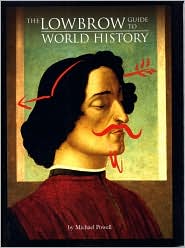
#197
Title:
Hurry Down Sunshine: A MemoirAuthor: Michael Greenberg
Publisher: Other Press
Year: 2008
238 pages
Greenberg's memoir of his teen daughter's first bipolar manic episode is both engaging and problematic.
"Engaging"
because of Greenberg's ability to tell the tale with emotion and
immediacy. This wrenching family narrative is well worth reading to
understand a parent's experience of extremely difficult and frightening
events. It appears that Greenberg's daughter and family received
inadequate and indifferent treatment, which is extremely troubling. His
description of the events and their effects on his family is wrenching
and raw.
"Problematic" first because Greenberg presents the story
angrily. This is understandable and certainly warranted given the
circumstances, but over the course of the book, the reader's impression
is that Greenberg is angry in general. He describes the lack of adequate
care his daughter received, and in the absence of context, I assume his
report is accurate. However, he doesn't describe which interventions
his daughter does receive, and when he alludes later to the course of
her recovery from this episode, he is silent on whether he believes that
her hospitalization and therapy were helpful. In many descriptions of
his and his family's life, he accentuates the negative, which raises
some concerns about the potential narrowness of his focus. Greenberg is
trying to be clear and brutally honest about himself, but sometimes just
seems brutal.
Further, Greenberg makes some puzzling errors
that may speak both to his confusion and a lack of adequate editing. For
example, he refers several times to "narcoleptics." He means
"neuroleptics," a category of antipsychotic medication. "Narcoleptic"
means a person with narcolepsy, a neurological sleep disorder.
Unfortunately this error occurs several times; in and of itself this
would just be unfortunate, but in conjunction with other areas of lack
of clarity, it makes me wonder how well Greenberg and his family
understood his daughter's treatment. Treatment can be confusing under
the best of circumstances, and I would have no problem with a
description of how confusing this experience was. However, it's not
obvious whether Greenberg ever got clarity on this. Greenberg expresses
his frustration that medical people do not know what causes bipolar
disorder, a frustration that is, in fact, shared by many practitioners.
However, Greenberg seems to have an ambivalent relationship with the
idea that this disorder may be biologically based, often describing his
shame and worry that he caused his daughter's bipolar disorder. Other
family members worry that they, too contributed to the problem, and
ruminate about the stigma associated with mental illness. One would
expect that part of this story would be the family's realization that
accepting this stigma is unreasonable, and the information that they
were radicalized by this experience in some way. However, Greenberg does
not report this, which seems to me to imply that he accepts the
legitimacy of that stigma, and that a primarily biological description
(if not explanation) of bipolar disorder is not sufficient for him. He
still seems to see the origin of his daughter's illness as interpersonal
or psychodynamic. While relational stress is often a contributor to
increased symptoms and decreased functioning, a review of the research
literature would show that stress and dysharmony are not sufficient to
cause bipolar disorder in the absence of a biological substrate. The
omission of this information seems strange to me given that Greenberg is
a journalist and presumably is able to do his own background reading,
call sources who could answer questions, etc. It again raises the
question of where his editor was. The overall effect is of a story
without a point, at least so far as the narrator's or his daughter's
development or learning. In this way, its structure is that of a case
report, not a plot.
Because the problems outweigh the benefits of
this narrative, I would not recommend it for people or families trying
to understand bipolar disorder. I would not assign it for a class on
diagnosis, but might in a class focused on disconnections between
families and providers.
For a more accurate and more nuanced report on bipolar disorder, read Jamison's
An Unquiet Mind: A Memoir of Moods and Madness.
Jamison describes her own bipolar disorder, and, as one of the major
contributors to the scientific research on bipolar disorder,
characterizes the diagnosis both more accurately and more hopefully.




